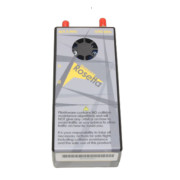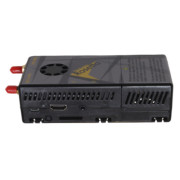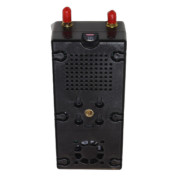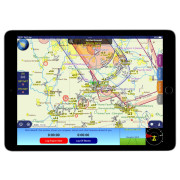PilotAware Rosetta - Electronic Conspicuity Device
The PilotAware Rosetta is the most interoperable Electronic conspicuity device available at any price range. With the ability to receive ADS-B, Mode-S, Mode-C and PilotAware transponders directly, while FLARM equipped aircraft are ‘uplinked’ to in range devices. It is the Europe’s leading Electronic Conspicuity device in terms of performance. Compatible with a wide variety of electronic bags, mobile devices and glass cockpit displays. With real time audio alerts which can either be connected directly to Bluetooth headsets or integrated into the communications package of your aircraft.
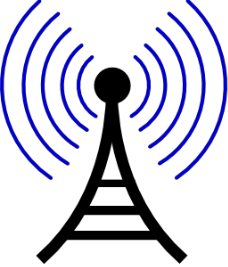
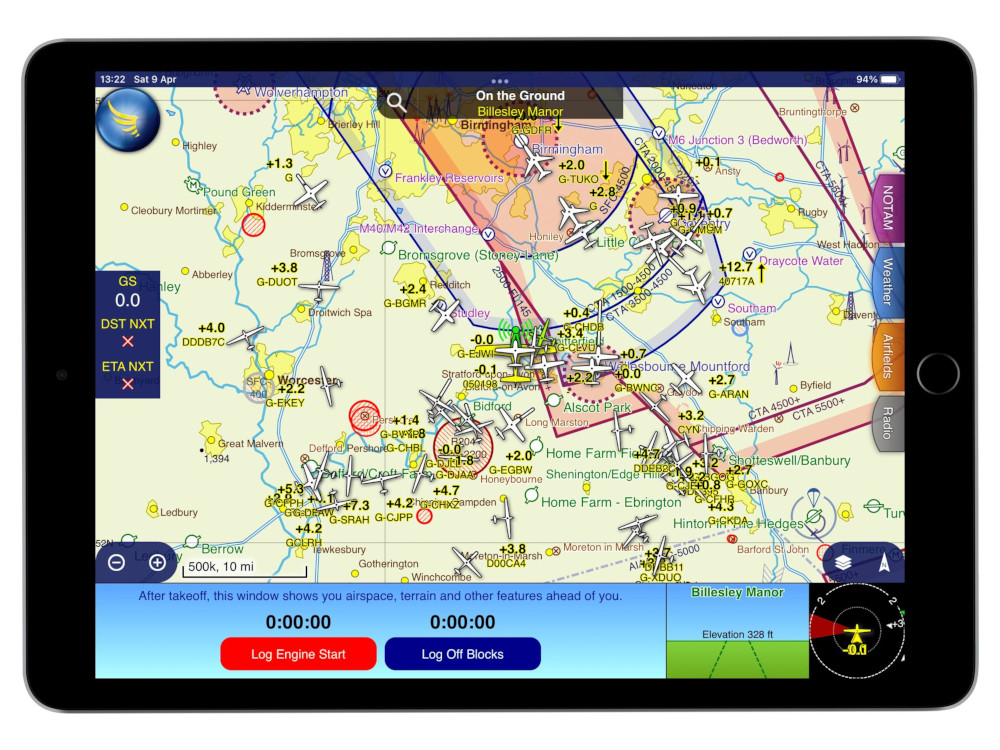 The vast majority of Electronic Conspicuity devices rely solely on direct detection. PilotAware takes advantage of its extensivez ‘ATOM-GRID network’ which has over 300 stations across the UK. This means that you can detect aircraft transmitting on different bands such as the aviation band (1090 MHz), EASA 860 band and the Mobil GSM band. This allows you to detect virtually every Electronic Conspicuity device available.
The vast majority of Electronic Conspicuity devices rely solely on direct detection. PilotAware takes advantage of its extensivez ‘ATOM-GRID network’ which has over 300 stations across the UK. This means that you can detect aircraft transmitting on different bands such as the aviation band (1090 MHz), EASA 860 band and the Mobil GSM band. This allows you to detect virtually every Electronic Conspicuity device available.
Includes
1 x Tested PilotAware Rosetta equipped with a GPS/Glonass module, internal Wi-Fi and Bluetooth.
1 x 869.5MHz end-fed dipole antenna (the large one)
1 x 1090MHz end-fed monopole aerial (the short one)
1 x 1M Micro USB Power Lead (colour may vary)
1 x QuickStart Guide
1 x MicroSD card adaptor (for updates if necessary)
6 x Suction cups.
1-year free PilotAware license key. (additional years cost £24.00 +Vat)
Please Note: a power supply will need to be purchased separately. We recommend either the Anker Power Core 10,000 or Anker Power Core 13,000
Direct Communication
Each PilotAware Rosetta is equipped with two radio modules. The 1090MHz receiver uses unique custom software to receive signals from ADS-B, Mode-S and Mode-C transponders.
The PilotAware radio module directly receives location signals from other PilotAware devices and also traffic and flight information uplinked from our ATOM-GRID network. This is done in a way which minimises bandwidth use and spectral clutter.
Intelligent Rebroadcasting
Utilising the power of PilotAware’s secure and intelligent ATOM-GRID, critical traffic information is instantaneously uplinked to PilotAware Rosetta devices through secure ATOM stations. This includes ADS-B, Mode-S, Mode-C, FLARM and PilotAware transponders.
Connect with your Favourite Equipment
PilotAware Rosetta is compatible with a wide variety of electronic flight bags, mobile devices and glass cockpit displays. Integrate PilotAware with your favourite setup using the instructions in the knowledge-base. Integration to additional flight bags is continuously being updated as new products become available.
Maintain your Primary Visual Scan
The PilotAware Rosetta provides real time voice alerts from detected traffic that are transmitting a signal that is being received by PilotAware. The output from the Rosetta unit is via a Bluetooth connection, or a standard 3.5mm stereo audio jack. Voice alerts can be integrated into the communications package in your aircraft or connected directly to most noise cancelling headsets. Making it feel like an air traffic service in your aircraft.
Licence Key
The Rosetta comes complete with a first-year PilotAware Licence Key which needs to be updated annually on the anniversary of registration.
What Should be Expected from a well Installed Carry on Device?
Providing the device is installed with the Antenna in a vertical manor with a clear line of site for both antennas and the GPS, the device will be more than capable of detecting the vast majority of aircraft directly without the support of the ATOM-GRID. There will however, be obscuration and attenuation in some directions. This is inevitable because the carry on device is inside an aircraft that is possibly occupied by up to 4 or more people. The following PilotAware VECTOR polar diagram shows what a real world, well-positioned carry on PilotAware Rosetta EC device can achieve,

This polar diagram, collected from several ATOM GRID stations, is from a Cabri G2 helicopter with a carry-on PilotAware Rosetta mounted in front of the dashboard. The polar diagram is analysed as follows. The air to ground range of the PilotAware unit is 50Kms + in all directions, except to the rear where there is significant obscuration. The obscuration is caused by the passengers, fuel and the engine to the rear of the aircraft. This obscuration could be reduced by the use of remote internal antennas or better still by using remote external antennas.
What Should be Expected from a Poorly Installed Carry on Device?
The vector polar diagram below shows a poorly installed carry on device from another Manufacturer.

This polar diagram is taken from a carry on device installed in a PA28, probably fixed to a port window. It can be seen that the EC device has been occasionally detected at 25KMs to the front left but the main detections are much weaker with significant obscuration to the rear and the starboard side. This is most probably caused by airframe obscuration and occupant attenuation. This is not a PilotAware device.
What Should be Expected of a Well Installed Device using External Antennas?
Every installation will be different, but by using external antennas with a good ground plane 360° transmission and reception is eminently possible with PilotAware units. The following Polar Diagram shows a PilotAware unit fitted with external antennas on a metal aircraft.

The above is VECTOR polar diagram from a VANS RV7 aircraft using a PilotAware Rosetta EC device fitted with remote external antennas. Gathered from 5 flights and 11,416 detections the VECTOR software is building an excellent polar pattern with 360 degrees of transmission at an air to ground range of over 60Kms to available distant ATOM stations. Each radial ring represents 20Kms. This is a clear example of the benchmark for a well-designed EC installation using external antennas.



